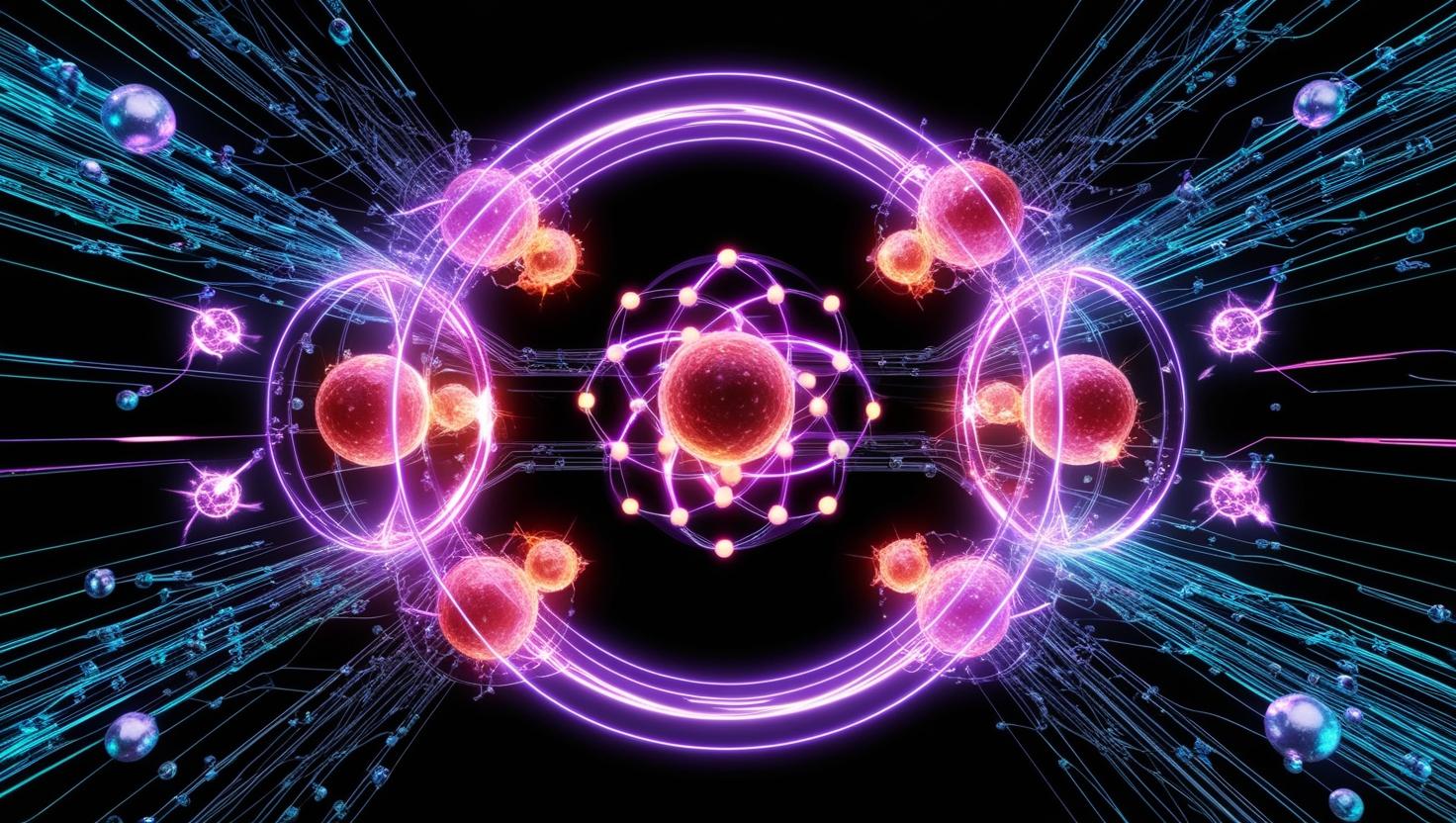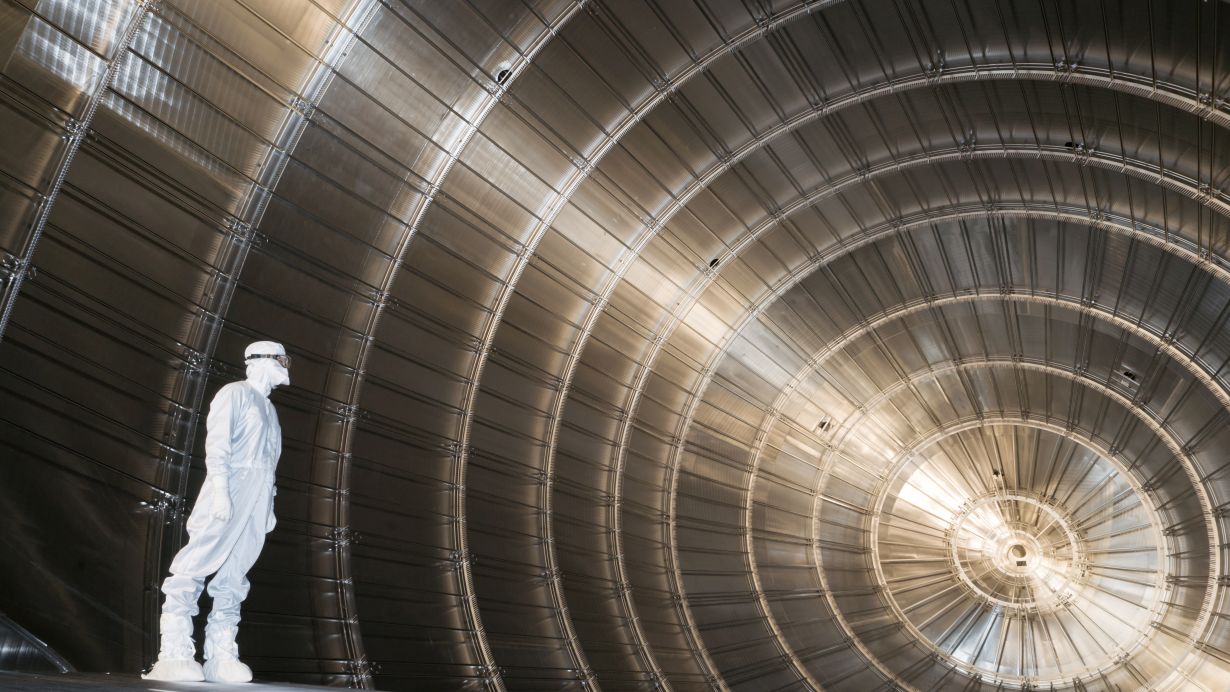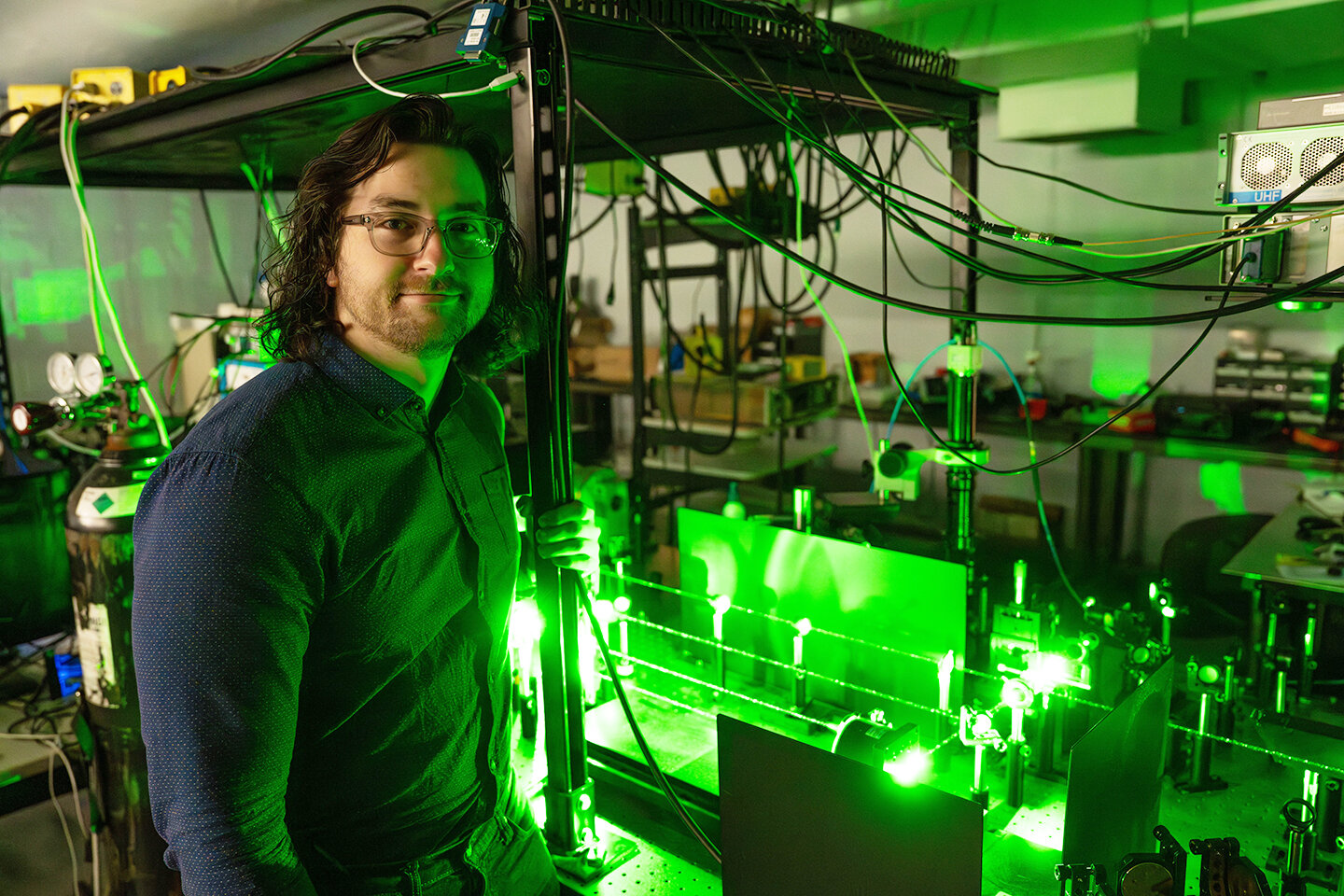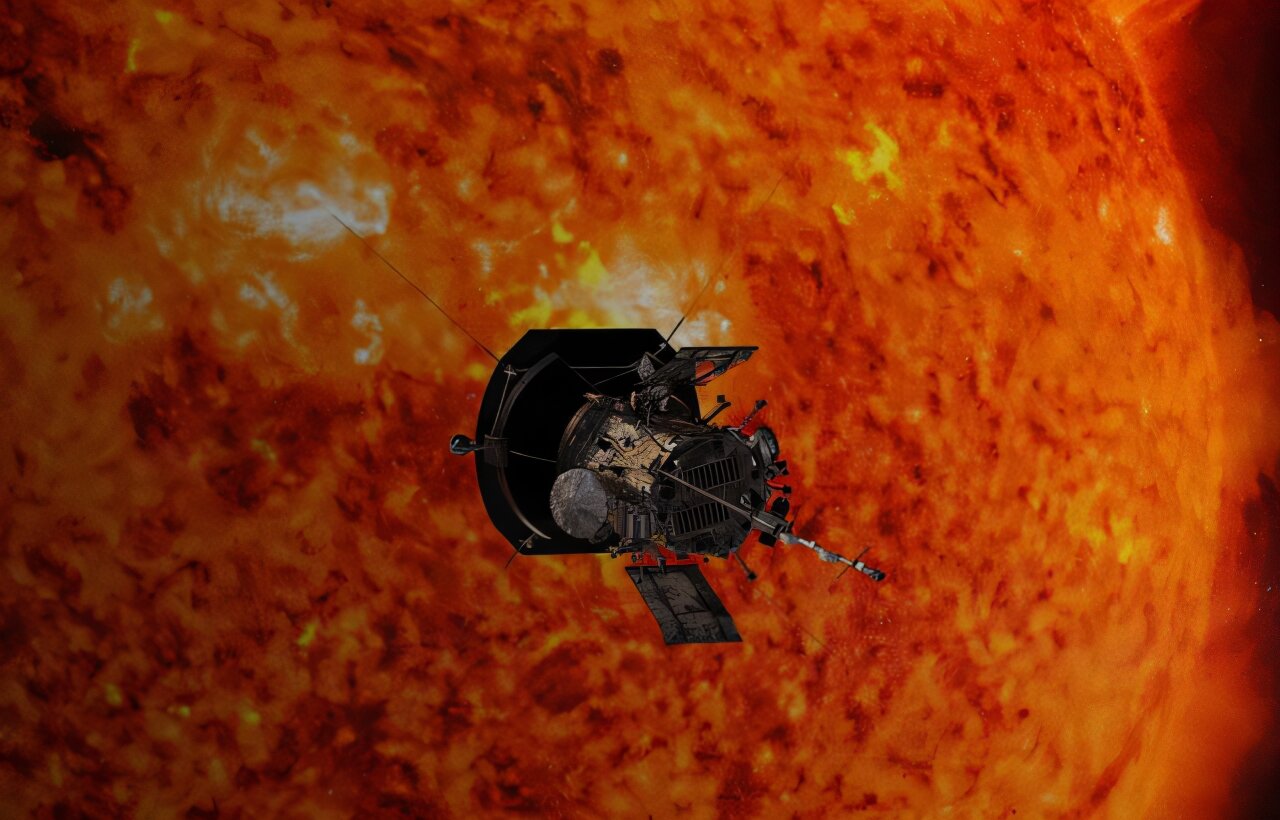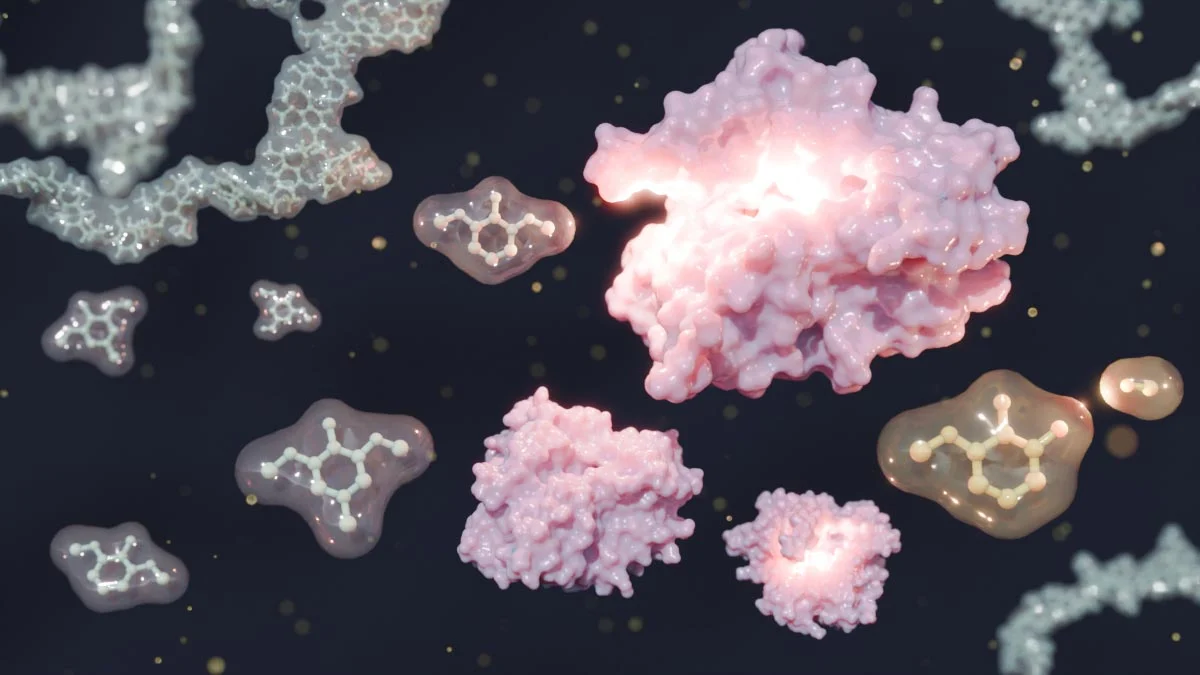Parker Solar Probe flying in front of the sun. Credit: Queen Mary, University of London
NASA’s Parker Solar Probe has discovered a hidden magnetic phenomenon called the helicity barrier, which could explain how the Sun energises its upper layers and launches its powerful solar wind into space.
What Is the Helicity Barrier?
Picture stirring a thick soup with a spoon. Now imagine parts of it swirling easily, while others push back and resist. That’s what helicity looks like in the Sun’s magnetic field. The “helicity barrier” forms when magnetic forces dominate over the Sun’s hot plasma, disrupting how energy flows from large scales to smaller ones. This makes it harder for turbulence to break down — trapping heat in the process.
The Parker Solar Probe recorded this effect during its 24th close approach in June 2025, just 6.2 million kilometers from the Sun. Conditions near the corona matched what physicists predicted would trigger the barrier: low plasma pressure and highly aligned magnetic waves.
A Solar System Game-Changer
This discovery is a milestone not just for heliophysics, but for understanding plasma in extreme environments. It’s a big leap forward from earlier work exploring turbulence in laboratory settings, and resonates with recent findings in light-speed modulation — like those seen in magnetic wave experiments on Earth.
Importantly, the helicity barrier may explain why the Sun’s corona burns at over a million degrees, while the surface sits at a relatively chilly 5,500°C. It also provides clues to how the solar wind, a stream of charged particles, gets accelerated out into the solar system — shaping space weather events that can affect satellites and power grids on Earth.
Mission to the Heart of the Sun
The Parker Solar Probe, launched in 2018, is on a bold mission to “touch” the Sun. With each orbit, it dips deeper into the corona, collecting real-time data on electric and magnetic fields, plasma flows, and solar dust. This latest discovery underscores the probe’s groundbreaking role in revealing unseen physics near our star.
And it doesn’t stop here. The barrier’s properties could help interpret other plasma structures too — including those in early galaxy evolution observed by the James Webb Space Telescope. The magnetic scaffolding shaping solar plasma may have distant cousins among the stars.
The Science Behind the Breakthrough
This research was published in the peer-reviewed journal Physical Review X and led by scientists at Queen Mary University of London, in collaboration with NASA. It’s based on direct measurements taken by the Parker probe’s onboard instruments, including the FIELDS and SWEAP suites.
The study confirms theoretical models proposed over a decade ago but never observed in situ — until now. It’s another win for space-based science and a reminder of how much we still have to learn about our nearest star.
Why It Matters
- Space Weather: Understanding the solar wind’s source helps us predict disruptions to satellites, GPS, and power grids.
- Stellar Physics: Similar helicity barriers may exist around other stars, influencing cosmic radiation and stellar winds.
- Plasma Research: These insights could advance fusion experiments here on Earth — and help tame the hottest matter in the universe.
Curious for More?
Our Sun still holds secrets, but Parker is helping us peel back the layers — one orbit at a time. If this story intrigued you, you might also enjoy reading about a recent quantum breakthrough that challenged phase transition theory — another place where turbulence plays a surprising role.
What Do You Think?
Could this invisible barrier be the key to solving space’s hottest mysteries? We’d love to hear your thoughts. Drop a comment below, share this article with your fellow space nerds, and don’t miss our other stories on DailySciTech.
More information: J. R. McIntyre et al, Evidence for the Helicity Barrier from Measurements of the Turbulence Transition Range in the Solar Wind, Physical Review X (2025). DOI: 10.1103/PhysRevX.15.031008
Journal information: Physical Review X


